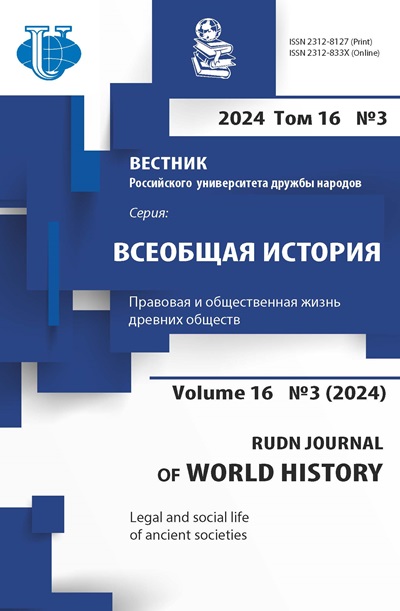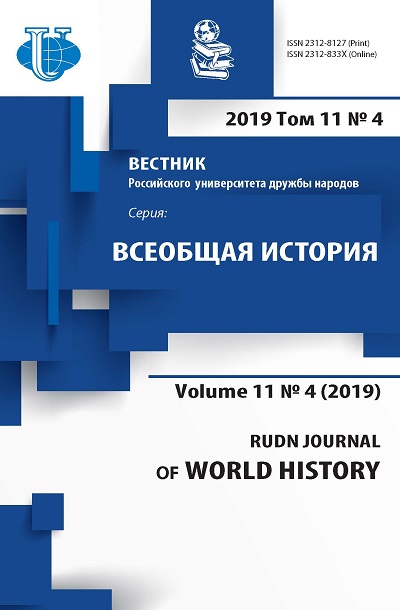Экспансия китайского бизнеса в Мьянме и китайско-мьянманские отношения (1988-1990)
- Авторы: Волосюк О.В.1, Пьё Найнг В.Я.1
-
Учреждения:
- Национальный исследовательский университет «Высшая школа экономики»
- Выпуск: Том 11, № 4 (2019)
- Страницы: 305-314
- Раздел: Из истории Востока
- URL: https://journals.rudn.ru/world-history/article/view/23434
- DOI: https://doi.org/10.22363/2312-8127-2019-11-4-305-314
Цитировать
Полный текст
Аннотация
В статье рассматривается эволюция китайско-мьянманских отношений в конце 1980-х годов в результате экономической экспансии Китая. «Восстание 8888» в августе 1988 года было подавлено военными, которые вернули себе власть в Бирме. Осуждая репрессии военного правительства, западные страны и Япония резко сократили помощь стране. Индия закрыла границы и создала лагеря беженцев вдоль границы с Бирмой. Эта ситуация привела к практически полной изоляции Бирмы в международном сообществе. Китай остался ее единственным стратегическим союзником в регионе. Согласно официальной статистике в 1988-1990 годах китайский бизнес в Мьянме был значительно расширен. Однако, несмотря на значительное улучшение торгового диалога, появились такие проблемы, как мигранты и несбалансированная торговля, что создало некоторые «трещины» в китайско-мьянманских отношениях. В статье рассматриваются различные случаи, которые вызвали негативное отношение народа Мьянмы к китайцам и даже привели к появлению такого термина, как «синофобия».
Об авторах
Ольга Виленовна Волосюк
Национальный исследовательский университет «Высшая школа экономики»
Автор, ответственный за переписку.
Email: ovolosiuk@hse.ru
доктор исторических наук, профессор департамента зарубежного регионоведения факультета мировой экономики и мировой политики
109028, Москва, Россия, Покровский бульвар, 11Вей Ян Пьё Найнг
Национальный исследовательский университет «Высшая школа экономики»
Email: ywai@hse.ru
аспирант Школы исторических наук, факультета мировой экономики и мировой политики
109028, Москва, Россия, Покровский бульвар, 11Список литературы
- Lutz-Auras L. Russia and Myanmar - Friends in Need? Journal of Current Southeast Asian Affairs, Vol. 34, No. 2, 2015. P. 165-198, Access mode: https://www.researchgate.net/publication/301545511_Russia_and_Myanmar_-_Friends_ in_Need (accessed: 17.04.2019).
- Deutz A. M. United States Human Rights Policy towards Burma: 1988-91, Contemporary Southeast Asia, ISEAS - Yusof Ishak Institute, Vol. 13, No. 2, September 1991, P. 164- 187, Access mode: https://www.researchgate.net/publication/249915250_United_States_ Human_Rights_Policy_towards_Burma_1988-91 (accessed: 17.04.2019).
- Crossette B. Exhausted Burma Struggles in Isolation, The New York Times, March 23, 1987. Access mode: https://www.nytimes.com/1987/03/23/world/exhaustedburma-struggles-in-isolation.html (accessed: 16.04.2019).
- BoBo. Bakaba Gaungsaung Thakhin ThanHtun yè nauksone naèyet Myar. (The Last days of the Bakaba leader Thakhin Thanhtun). Access mode: https://www.bbc.com/ burmese/in-depth-45589293 (accessed: 17.04.2019).
- Ajay Kamalakaran. How Russia Supported Burma’s independence struggle, History, April 05, 2016, Russia Beyond the Headlines, Access mode: https://www.rbth.com/ arts/history/2016/04/05/how-russia-supported-burmas-independence-struggle_581631 (17.4.2019) (accessed: 17.04.2019).
- Tin Maung Maung Than. Myanmar And China: A Special Relationship? ISEASYusof Isak Institute, Southeast Asian Affairs, 2003, Access mode: http://www.jstor.org/stable/27913234 (accessed: 02.02.2019).
- Kudo Toshihiro, Myanmar’s Economic Relations with China: Can China Support the Myanmar Economy? IDE Discussion Paper, Institute of Developing Economics, Japan External Trade Organization (IDE-JETRO), 2006-07-01. Access mode: http://hdl.handle.net/2344/152 (accessed: 20.04.2019).
- Burma-China Chronology to 1999, Chronology complied by Burma Peace Foundation, September 1999. Access mode: http://www.ibiblio.org/obl/docs4/ChinaBurma_Chronology.pdf (accessed: 23.04.2019).
- Interview with the Myanmar scholar U Min Tayza via telephone (accessed: 21.04.2019).
- Maung Aung Myoe. In The Name of Pauk-Phaw: Myanmar’s China Policy Since 1948, Institute of Southeast Asian Studies, Singapore, 2011. P. 107.
- U Myo Thit. A Nee Khit Tayout-Myanmar Setsann Yay (Contemporary ChinaMyanmar Relations) (1988-2015). Access mode: https://www.bbc.com/burmese/indepth-41670417 (accessed: 23.04.2019).
- Le Bail H., Tournier A., Form Kunming to Mandalay: The New “Burma Road”, Developments along the Sino-Myanmar Border since 1988, L’Institut Francais des relations internationals, March 2010. Access mode: http://www.burmalibrary.org/docs08/ IFRI_av25lebailtourniere(en).pdf (accessed: 23.04.2019).
- McCarthy S. Ten Years of Chaos in Burma: Foreign Investment and Economic Liberalization under the SLORC-SPDC (1988 to 1998). Pacific Affairs, Summer 2000, P. 233-262, Access mode: https://www.researchgate.net/publication/261742544_Ten_ Years_of_Chaos_in_Burma_Foreign_Investment_and_Economic_Liberalization_und er_the_SLORC-SPDC_1988_to_1998. (accessed: 25.04.2019).
- Steinberg D. I. & Hongwei Fun. Modern China-Myanmar Relations: Dilemmas of Mutual Dependence, NIAS-Nodic Institute of Asian Studies, 2012.
- Dingxin Zhao. Decline of Political Control in Chinese Universities and the Rise of the 1989 Chinese Student Movement, Sociological Perspectives, SAGE Publications, Inc., Vol. 40, No. 2, 1997. P. 159-182, Access mode: https://journals.sagepub.com/ doi/abs/10.2307/1389520. (accessed: 25.04.2019).
- Kudo Toshihiro. Myanmar’s Economic Relations with China: Who benefits and who pay? ANU Press, 2008. Access mode: https://www.jstor.org/stable/j.ctt24hf5k.10 (accessed: 25.04.2019).













